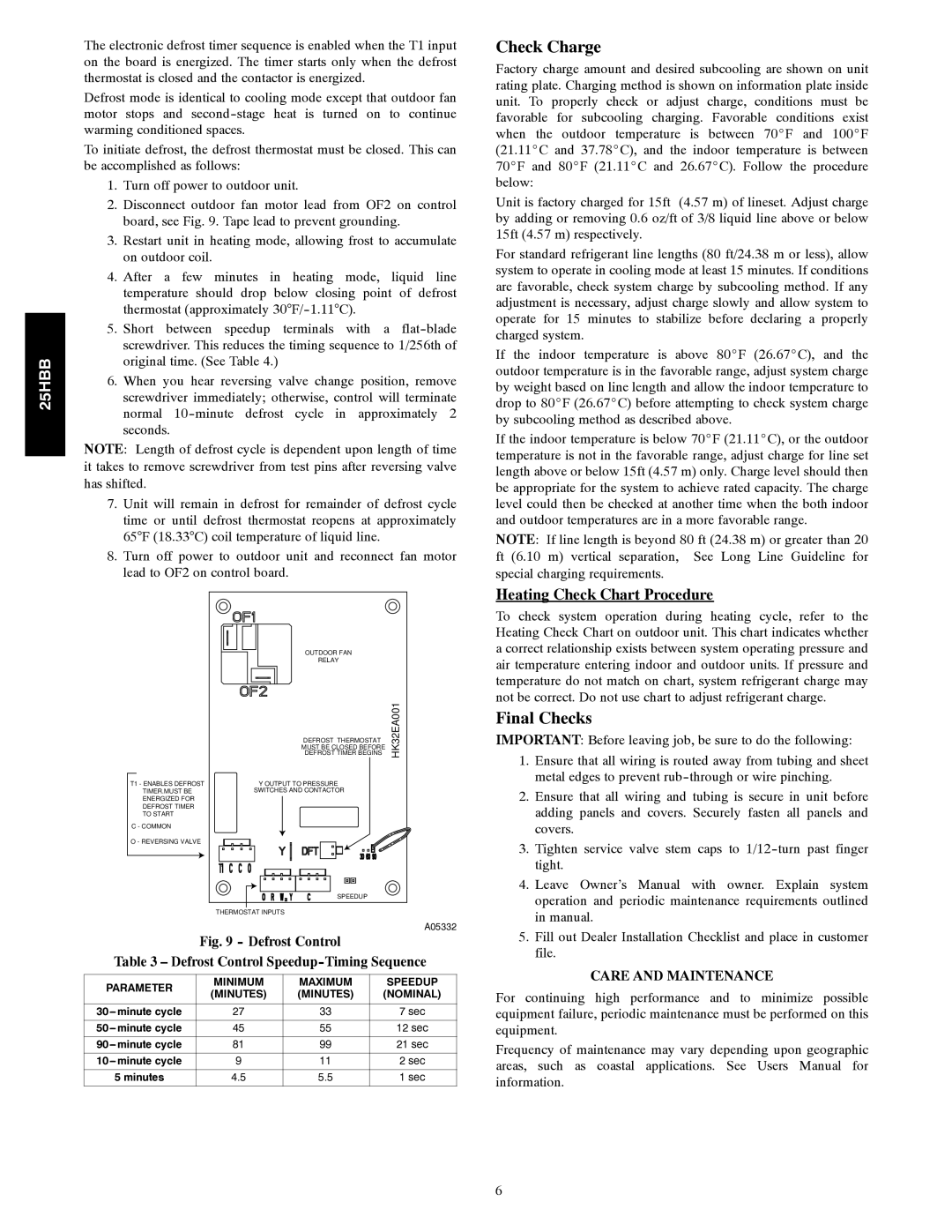25HBB specifications
The Carrier 25HBB is a highly regarded air conditioning unit that embodies advanced technology and efficient performance, appealing to residential and commercial users alike. This model is part of Carrier's extensive range of HVAC systems, known for its quality and reliability.One of the standout features of the 25HBB is its energy efficiency. Equipped with a high SEER (Seasonal Energy Efficiency Ratio) rating, this model efficiently cools spaces while reducing energy consumption. This characteristic not only lowers utility bills but also minimizes the unit's carbon footprint, making it an environmentally friendly choice.
The 25HBB is powered by a unique inverter technology, allowing the compressor to adjust its speed based on the cooling demand. This adaptability results in stable temperatures throughout the environment, enhanced comfort levels, and significant energy savings. Additionally, the variable-speed operation limits noise levels, making it an ideal solution for residential areas or environments where quiet operation is a priority.
Another remarkable characteristic is its robust construction and durability. Carrier has incorporated high-quality materials and components, ensuring that the 25HBB can withstand varying weather conditions while maintaining superior performance. The unit is designed to operate quietly and efficiently, with features like a sound-dampening compressor and insulated cabinet.
User-friendly controls are a highlight of the 25HBB, as it comes equipped with a programmable thermostat that allows for customized temperature settings. This feature enables users to prioritize comfort while maximizing energy efficiency. Many units in this model range also support smart technology integration, allowing users to control their HVAC systems remotely via smartphone applications.
The Carrier 25HBB is available in various capacities, catering to different space requirements and preferences. It also features a range of advanced filtration systems to improve indoor air quality, capturing dust, allergens, and other particulates. Regular maintenance of the unit is facilitated by easy access to components, ensuring long-lasting performance.
In summary, the Carrier 25HBB stands out for its energy efficiency, advanced inverter technology, durability, and user-friendly features. These characteristics make it an exceptional choice for anyone looking for a reliable and efficient air conditioning solution. Whether for a residential or commercial application, the 25HBB exemplifies Carrier’s commitment to innovation and customer satisfaction.

